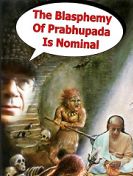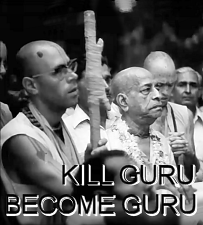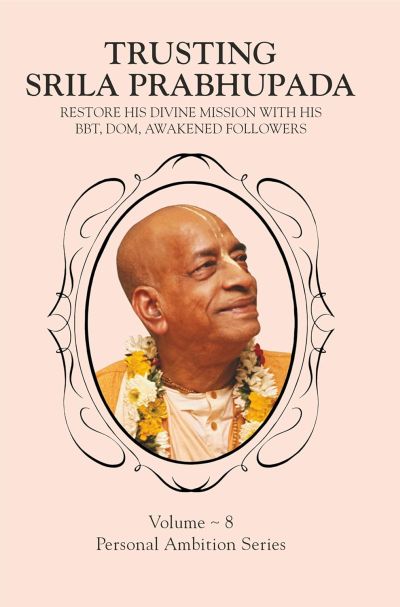(World Map by Strabo 1815 reconstruction of the world map
according to Strabo (64 or 63 BC – c. 24 AD)
who was a Greek geographer, philosopher, and historian)
Śukadeva Gosvāmī says:
Kirāta, Hūṇa, Āndhra, Pulinda, Pulkaśa, Ābhīra, Śumbha, Yavana, members of the Khasa races and even others addicted to sinful acts can be purified by taking shelter of the devotees of the Lord, due to His being the supreme power. I beg to offer my respectful obeisances unto Him.
Kirāta: A province of old Bhārata-varṣa mentioned in the Bhīṣma-parva of Mahābhārata. Generally the Kirātas are known as the aboriginal tribes of India, and in modern days the Santal Parganas in Bihar and Chota Nagpur might comprise the old province named Kirāta.
Hūṇa: The area of East Germany and part of Russia is known as the province of the Hūṇas. Accordingly, sometimes a kind of hill tribe is known as the Hūṇas.
Āndhra: A province in southern India mentioned in the Bhīṣma-parva of Mahābhārata. It is still extant under the same name.
Pulinda: It is mentioned in the Mahābhārata (Ādi-parva 174.38), viz., the inhabitants of the province of the name Pulinda. This country was conquered by Bhīmasena and Sahadeva. The Greeks are known as Pulindas, and it is mentioned in the Vana-parva of Mahābhārata that the non-Vedic race of this part of the world would rule over the world. This Pulinda province was also one of the provinces of Bhārata, and the inhabitants were classified amongst the kṣatriya kings. But later on, due to their giving up the brahminical culture, they were mentioned as mlecchas (just as those who are not followers of the Islamic culture are called kafirs and those who are not followers of the Christian culture are called heathens).
Ābhīra: This name also appears in the Mahābhārata, both in the Sabhā-parva and Bhīṣma-parva. It is mentioned that this province was situated on the River Sarasvatī in Sind. The modern Sind province formerly extended on the other side of the Arabian Sea, and all the inhabitants of that province were known as the Ābhīras. They were under the domination of Mahārāja Yudhiṣṭhira, and according to the statements of Mārkaṇḍeya the mlecchas of this part of the world would also rule over Bhārata. Later on this proved to be true, as in the case of the Pulindas. On behalf of the Pulindas, Alexander the Great conquered India, and on behalf of the Ābhīras, Muhammad Ghori conquered India. These Ābhīras were also formerly kṣatriyas within the brahminical culture, but they gave up the connection. The kṣatriyas who were afraid of Paraśurāma and had hidden themselves in the Caucasian hilly regions later on became known as the Ābhīras, and the place they inhabited was known as Ābhīradeśa.
Śumbhas or Kaṅkas: The inhabitants of the Kaṅka province of old Bhārata, mentioned in the Mahābhārata.
Yavanas: Yavana was the name of one of the sons of Mahārāja Yayāti who was given the part of the world known as Turkey to rule. Therefore the Turks are Yavanas due to being descendants of Mahārāja Yavana. The Yavanas were therefore kṣatriyas, and later on, by giving up the brahminical culture, they became mleccha-yavanas. Descriptions of the Yavanas are in the Mahābhārata (Ādi-parva 85.34). Another prince called Turvasu was also known as Yavana, and his country was conquered by Sahadeva, one of the Pāṇḍavas. The western Yavana joined with Duryodhana in the Battle of Kurukṣetra under the pressure of Karṇa. It is also foretold that these Yavanas also would conquer India, and it proved to be true.
Khasa: The inhabitants of the Khasadeśa are mentioned in the Mahābhārata (Droṇa-parva). Those who have a stunted growth of hair on the upper lip are generally called Khasas. As such, the Khasa are the Mongolians, the Chinese and others who are so designated.
From the Bhaktivedanta purports of the Second Canto, Fourth Chapter, of the Śrīmad-Bhāgavatam, entitled “The process of Creation.” Text 18








THE MAP OF STRABO
Yes, all travels and journeys are limited in scope and duration, still archeological artefacts are the only real window into ancient times. As we know from the Vedas how arrows can be so expertly used like in the case of Arjuna, here we see how widely they have been used until 2000 years ago on the Indian continent that other civilisations had no clue about it at that time.
….However, the Scythian warrior’s most effective weapon was the bow. Made of laminated wood, horn, sinew, and glues, it represented the apex of bow technology copied by subsequent nations like the Parthians, Mongols, and Turks. These bows were fashioned in a recurve profile to maximize the acceleration and long-range accuracy of the arrow. Being shorter, they were ideal for shooting arrows from horseback. With a common pattern of a wood core with limbs formed to curve away from the shooter, once strung, the limbs’ strength and springiness were accentuated with presoaked horn laminate glued to the inside of the limbs and laminate of pounded sinew glued to the outside. A laborious process, taking up to two years to assemble, cure, and dry, the Scythian composite recurve was a valued prize, perhaps even traded to select allies like their Greek partners…
To carry their bows and up to 75 arrows at the ready, the Scythians produced an interesting container called the gorytos. From this wide leather case, the Scythian warrior could retrieve and release up to 12 arrows a minute. With this rapid-fire technique, “given the hundreds of mounted archers who took part in most engagements, one can only imagine the hail of deadly arrows which fell among their enemies” (Chernenko, 12). Moreover, if their arrows did not hit a vital part of the body, the poison the Scythians dipped them in would finish the job. Scythicon was reputed to consist of a mixture of snake venom, decomposed snake flesh, and human serum. Arrow points dipped in this lethal concoction could, as Renate Rolle states, “cause the slightest wound to be fatal” (65). Finally, adding to its terror effect, the Scythians fashioned some of their arrows with barbed tips, making them excruciatingly difficult to remove….
https://www.worldhistory.org/Scythian_Warfare/
_______
( Interesting is also the fact that it seem to be always the same types of ingredients that do the job perfectly whether it was 2000 years ago or today)
Pamho agtacbsp, actually SCM GIVE THE PROOF THAT HE IS THE MOST MERCIFUL AVATARA AS SRILA RUPA GOSVAMI CONFIRMED,there will not be another SRI CAITANYA MAHAPRABHU FOR THE FUTURE BECAUSE HE IS THE MOST MERCIFUL, the best friend of all the living entities therefore one must be a fool and demon to lose this golden chance at it come every kali yuga age to save the most fallen kali chela citizens of this age.GAURANGA MAHAPRABHU KI JAY.AGTACBSP YS HARIBOL
„Sadhakowie, osiągający doskonałość dzięki wielbieniu jedynie Gaurangi, bez Radha-Kryszny, otrzymają duchowe ciało do służenia Panu Ćajtanji w Jego wiecznej siedzibie Nawadwipie.
Wielbiący Krysznę bez Gaurangi osiągną ciało duchowe, by cały czas służyć Krysznie we Wryndawan.
Ale wielbiciele zarówno Gaurangi jak i Kryszny otrzymają dwa ciała duchowe, do służenia ich Panom w Nawadwip i we Wryndawan.”
Źródło : Jayva Dharma
Źródło : Docenić Śri Navadvipa Dhama
Rozdział czternasty – Mieszkając w Navadvipa Dhama, Służba w Dhama
Autor : Mahanidhi
“Sadhakas who attain perfection by worshiping Gauranga alone, without Radha-Krishna, will be given a spiritual body to serve Lord Caitanya in His eternal abode Navadvipa.
Krishna devotees without Gauranga will attain a spiritual body to serve Krishna all the time in Vrindavan.
But the devotees of both Gauranga and Krishna will be given two spiritual bodies to serve their Lords in Navadvip and Vrindavan.”
Source: Jayva Dharma
Source: Appreciate Sri Navadvipa Dhama
Chapter Fourteen – Living in Navadvipa Dhama, Service in the Dhama
Author: Mahanidhi